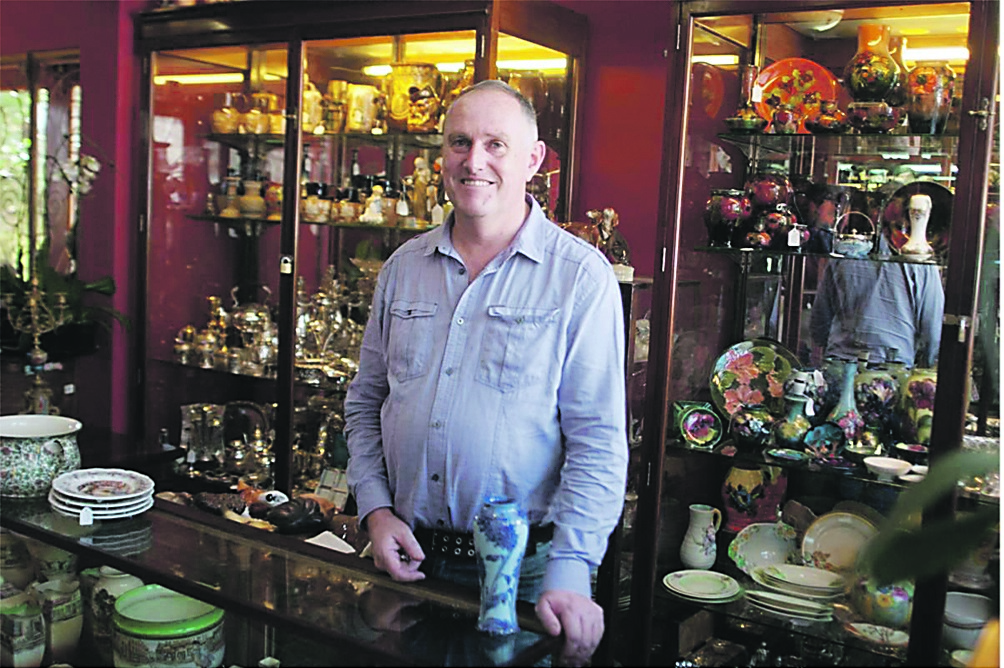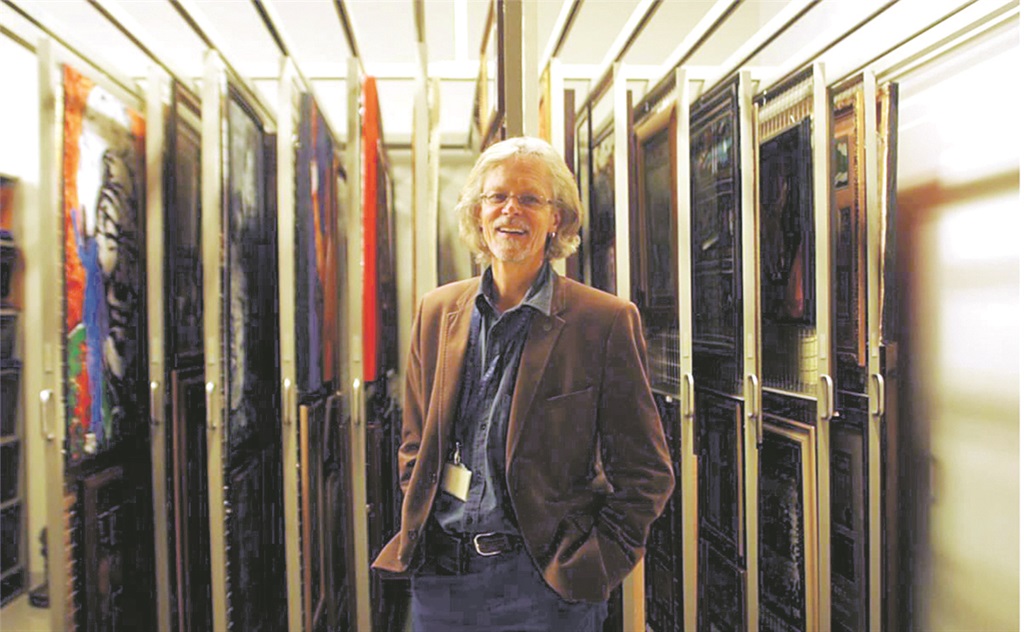
As one of the world’s most loved statesmen, Nelson Mandela was showered with gifts from all over the world, particularly by people who walk the corridors of power and popular culture.
Not being much of a collector himself, and having a keen eye for artistic beauty, he would often consign tokens of admiration to a “dustbin” of sorts, an unceremonious section in the vaults of his own personal records archive in Houghton, the Centre of Memory, when it didn’t pass aesthetic muster with him.
One of these items is a depiction, in bronze, of a statesman with three right arms held aloft, presumably to symbolise the motion of a salute.
“I mean, look at it,” says the centre’s Verne Harris, “it’s hideous. Madiba knew what he liked and this was definitely not it.”
Turning to the paintings section in what Harris calls “the rogue’s gallery”, he pulls out an obscure canvas and says: “This is another. He got it from [US actor] Robert De Niro.”
According to Harris, the multiarmed bronze statue is probably “worth nothing, but tell someone that Madiba actually got it from [US First Lady] Michelle Obama, and it changes everything”.
In Mandela’s mind, it still didn’t change the fact that he didn’t want it in his immaculately decorated house, and so it became an archived abomination – read Obamanation – tucked away deep in the centre’s belly.
But how is the value of “Mandela memorabilia” determined?
Harris says that, for starters, the mere use of a word like ‘memorabilia’ signifies the commonplace tackiness that characterises so many so-called collectables that, in one shape or form, are reportedly connected to Mandela’s legacy.
“And there’s much of it out there,” says Harris, and this is part of the problem.
But what if a layman thought he or she had something of value that previously belonged to Mandela or, more importantly, carries the icon’s distinctive signature?
How do you tell if it’s an everyday piece of relatively worthless memorabilia or a valuable historical artefact?
“The first step is to approach a proper authority for an opinion of authenticity,” says Harris.
The Nelson Mandela Foundation, which runs the Centre of Memory, is in a position to offer that service, but in some cases additional specialist expertise would be required.
“We can assist with establishing the plausibility of a particular document, but we would need a handwriting expert to provide that extra layer of expertise to verify whether it is indeed Madiba’s.”
Harris adds: “At the foundation, we have a team of archivists and we have a body of archival material, but we also have access to a wide range of people with direct, first-hand experience of particular moments from Madiba’s life.”
One of the best sources of authentication, of course, was Mandela himself.
“Someone once brought us a pair of boots and said they were used by Madiba when he was being trained as a guerilla fighter,” Harris says.
“We took the boots to his house and he confirmed that they never belonged to him.”
In another instance, the centre was presented in 2004 with a pair of notebooks taken from Mandela’s cell on Robben Island in 1971.
At the time the notebooks were confiscated, a prison official said they should be shredded and thrown in the trash, but a code-breaker and member of the then security police, Donald Card, took custody of the books.
“Card brought the notebooks to us and the handwriting in it looked very much like Madiba’s,” says Harris.
“We subsequently showed them to Madiba, who then told us about the removal of the notebooks and their subsequent disappearance. In our archives, we also found written evidence of Madiba asking for the notebooks back.”
This case, however, is a rare example where the provenance, or verifiable trail of a historical artefact – a phrase the centre prefers to signify legitimacy – adds up.
Clyde Terry, who runs an antiques dealership in Melville, says buyers and sellers should always do their own homework first, using as many “check points” as possible to vet the veracity of an item.
“Use the internet. Compare what you have to similar items. See how exact it is,” he says.
“It’s important that people should first establish what it is that they have and, secondly, what the relative desirability is of something in the market place, and also how good the market is.”
The reputable appraiser says that an important part of value determination, once you have established what you have, is to realise that some things have a “steady value” and other things have an “unsteady value”.
To get around this, Terry says: “Get offers from at least two buyers and compare the price. If they differ widely, get a third offer.
“You can also take it directly to auction and see what bidders are willing to pay because, sometimes, value is dictated in the market place.”
Regarding selling something at auction and not being sure about the price, sellers should remember to tell the auctioneer that it is “subject to confirmation”, so they can confirm or decline the price.
Uncertainty can also be ruled out by consulting the National Antique & Decorative Arts Association (naada.co.za), which has 50 to 60 members.
“These people are specialist traders and experts,” Terry says.
“It is always important to buy and sell with trust, but to do this, you need to go to someone you can trust,” Terry says.
Readers who are in possession of collectables and who would like have it appraised and possibly sold at auction are welcome to approach City Press Auctions with their items. We have a network of specialists who can help, free of charge. Email us: projects@citypress.co.za




 Publications
Publications
 Partners
Partners









